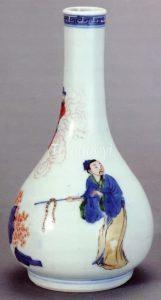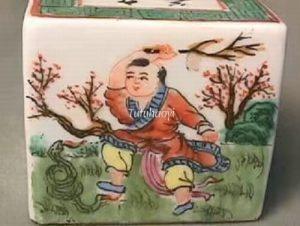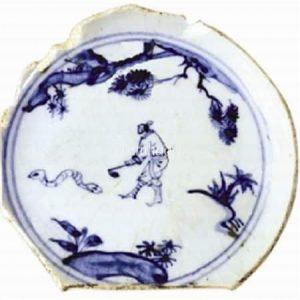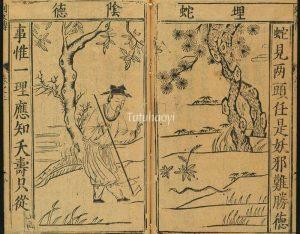Sunshu Ao Burying Snake
孙叔敖埋蛇
© Tutuhaoyi.com owns the copyright of the description content for the images attached. Quoting all or part of the description content on this page is permitted ONLY IF ‘Tutuhaoyi.com’ is clearly acknowledged anywhere your quote is produced unless stated otherwise. (本页描述内容版权归Tutuhaoyi.com所有,转发或引用需注明 “Tutuhaoyi.com”, 侵权必究, 已注开源信息的条目除外。)
Sunshu Ao (孙叔敖, c. 630 – c. 593 BCE) was a hydraulic engineer and politician during the Eastern Zhou Dynasty (770-258 BCE). When he was a child, he came across a snake one day. The snake was unusual because it had two heads. According to the legend, anybody who saw such a snake would soon die. Sunshu killed the snake and buried it. When he got home, Sunshu told his mother that he was not going to live much longer because he saw a two-headed snake. His mother asked what had happened to the snake and Sunshu told her that he had killed and buried it in case more people should encounter the misfortune. His mother told him that the gods would bless those who had the virtue of doing such good deeds and he would not die. Later, Sunshu grew to be the prime minister of the Chu 楚 state because of his merits.
The earliest version of the story, painted on a lacquer screen made before 484 CE, had the snake depicted as a twin-headed one, as opposed to the later versions on woodblock print and porcelains with one head at either end of the snake, which is anatomically implausible.
Fig 1: lacquer screen, excavated from Sima Jinlong tomb, Northern Wei period (386-534), courtesy of Shanxi Museum, China
Fig 2: porcelain bottle vase, Qing dynasty (1644-1911), location to be confirmed
Fig 3: porcelain jar (detail), Chongzhen period (1628-44), Ming dynasty, private collection
Fig 4: porcelain vessel, Qing dynasty (1644-1911), location to be confirmed
Fig 5: porcelain shard, late Ming dynasty (1368-1644), private collection
Fig 6: Lie Nv Zhuan 全像古今列女志传, woodblock print, 1591, courtesy of Harvard University





